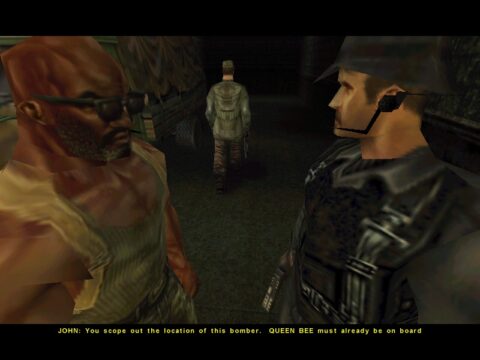
Soldier of Fortune
Written by: Rik
Date posted: February 13, 2010
- Genre: Action
- Developed by: Raven
- Published by: Activision
- Year released: 2000
- Our score: 6
We may as get this out of the way: yes, Soldier of Fortune is that game where you can blow your enemies’ limbs off with a shotgun. In fact, can is probably the wrong word: unless you’re a really bad shot, before the game is over you will rob several hundred nameless and faceless enemies of one or more of their arms or legs, leave a good number of others with their intestines hanging out and subject a significant unfortunate majority to a fate where their bodies are discovered with what remains of their genitalia smeared all over their combat trousers.
Regardless of how blasé you generally are about violence – and it’s fair to say that most gamers have a pretty high tolerance for senseless maiming – there are moments in this game that are likely to cause a spot of unease for even the most hardened of FPS veterans. The booms, bangs and bloodshed, we’ve all seen before, but here the aftermath is slightly more unsettling – I mean, when people scream, they actually sound like they’re genuinely suffering a horrifying amount of pain, rather than just making a generic ‘argh!’ noise and falling down dead. That’s if they do fall down dead, of course – sometimes they roll around on the floor, sobbing and whimpering and leaving you feeling slightly conflicted about whether to put them out of their misery or not.
The plot of the game doesn’t help. For some reason, it sees your one-man killing machine take a whistle-stop tour of some of the most war-torn areas of the globe, making the world safe for democracy by pumping several thousand foreign soldiers full of warm American lead. Even if you make some pre-2001 allowances, there’s just something not quite right about setting several levels of a gung-ho shoot ’em-up in Iraq, and to be honest the levels in Kosovo and Somalia don’t sit so easily either.
The contemporary setting presumably owes something to the contribution of former ‘real-life’ mercenary, John Mullins, to the project. Much was made of this at the time, with plenty of pre-release hype centring not on the blood and gore but around how Mullins was working hard with the developers to deliver an ultra-realistic simulation of modern warfare. If it was all-round realism that they were going for, then they certainly missed the mark (as we shall see) – and on reflection, it seems slightly unclear exactly what Mullins’ presence brought to the game, other than lending his name to the main character (and presumably also giving his consent to being portrayed as a massive tool – see Going down The Shop for more on this) and providing confirmation that when you gun someone down in real life, it gets pretty damn messy.
Anyway, if we were appraising the game as an ‘ultra-realistic simulation of modern warfare’ then we might mention some or all of the following: the fact that you’re just one heavily-armed man facing off against endless waves of heavily-armed foes, the vast majority of whom prefer to stand around waiting for you to shoot them rather than pro-actively trying to eliminate you; at no stage is being careful or quiet a necessity; while your bullets mostly rip through the bodies of your enemies like a hot knife through butter, there are some extremely resilient exceptions, who share your own character’s talent for absorbing heavy gunfire and surviving direct hits from rockets and grenades. And so on.
Clearly, it’s best to take Soldier of Fortune‘s claims to realism with a pinch of salt, which is probably just as well, if only because taking the game slightly less seriously seems to mitigate against the mega-violence on display. You kind of suspect that Raven expected as much, too – if they didn’t, then the end-of-level statistics screen that informs you of how many people you’ve killed, how many of them lost their heads and how many people you shot in the crotch is the work of a fairly twisted mind. One wonders if this is the kind of thing Mullins used to keep an eye on when he was ‘active’ – perhaps some employers used to offer cash bonuses for disembowelling their enemies during a mission.
Anyway, enough of all of this. It’s a game, after all, and one with an 18 certificate, so there’s limited mileage in harping on too much about the violence, and it’s perhaps also a little unfair to judge the game more harshly than other FPS titles of a similar vintage because of it. Still, the reason I’ve harped on about it so much at the start [I think you’ve reached ‘the middle’ by now, actually – FFG reader] is because, frankly, it’s the defining feature of the game. If you ignore the – and I hesitate before using this word – noveltyfactor of the extra blood and gore, you’re left with a fairly unremarkable shooter.
That’s not to say it’s a bad game, but it’s certainly not one that boasts many impressive, stand-out features. The graphics were slightly below-par at the time of release, and they haven’t aged well: it’s not so much the basic models and rectangular architecture that disappoint, more the murky palettes (I know it’s meant to be grim and gritty, so I’m not expecting all the colours of the rainbow, but the interchangeable browns, greens and greys on offer here are pretty drab) and the unimaginative scenery which blight many of the game’s missions and render them largely interchangeable.
While there are some good ones – I’m thinking of an early one on a moving train, a chase through the New York sewers around halfway through, and an excellent, Die Hard inspired skyscraper level towards the end – these are exceptions rather than the rule. Many of the levels are simply arenas for the gunplay, but here again SoF disappoints: with one or two exceptions, the enemies don’t have any particularly distinguishing features, and though the character models change from location to location, behaviour and weaponry doesn’t seem to alter all that much, certainly not to the extent that you have to employ any variations to a general strategy of ‘see it, shoot it’.
I’m not exactly saying that the violence makes the game better, more that if you turned it off (which you can do, by the way) its shortcomings are likely to become more obvious. Clearly, a lot of effort went into implementing the bodily damage system, enough to make it the centrepiece of the game rather than simply representing a flashy extra. So if you’re going to play the game, you may as well have all the gore turned on, because not only is that how the developers intended you to experience it, but you’re also effectively cutting out a large piece of the game’s content if you don’t.
Despite everything I’ve said, Soldier of Fortune can actually be rather good fun to play. It moves along at a sharp pace, with few levels outstaying their welcome, and the constant stream of baddies that are thrown at you mean that there’s rarely a dull moment – even if you don’t have to use your brain too much to outsmart your foes, the sheer weight in numbers is enough to cause panic at times and get the adrenaline flowing.
The undemanding nature of the action at the standard difficulty level does mean you’ll be done and dusted with it all in super-quick time, but I’d argue it suits the game well, and though you could eke out a few more hours by ramping up the difficulty, the additional challenge largely comes through a shortage of saves and pickups rather than a more engaging battle with intelligent computer foes. If you’ve got the platinum edition, you can even pitch the difficulty somewhere between the top two levels by adjusting each of the variables yourself (which means anyone partial to obsessive quicksaving can indulge themselves without removing the last vestiges of challenge from the game).
Conclusion-time, then, and I’d have to say that my verdict on this is one of cautious recommendation. If you’re curious about the game’s notoriety and haven’t played it before, it’s definitely worth at least one play through, not only to see what all the fuss was about, but because it’s also a fairly solid, undemanding shooter that can be done and dusted inside a few hours. That said, if the setting or the content sounds more than a little tasteless to you, then I can also say you won’t particularly regret giving it a miss either.

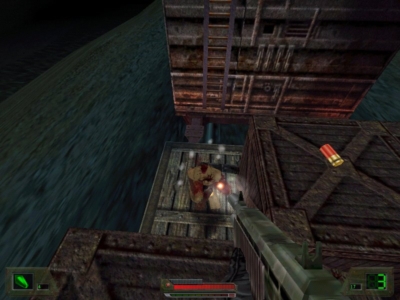
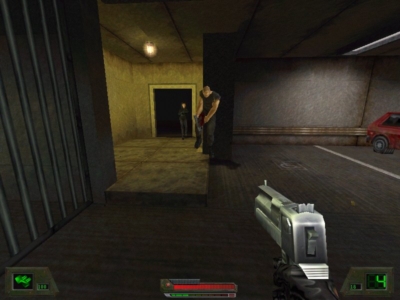
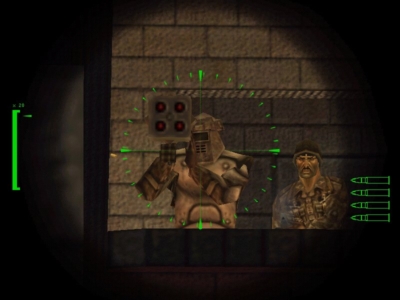
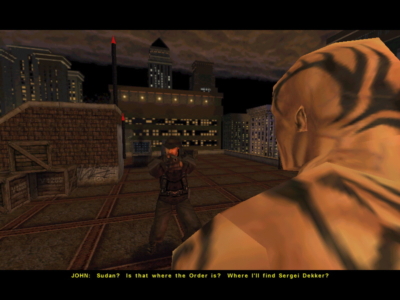

 Posts
Posts